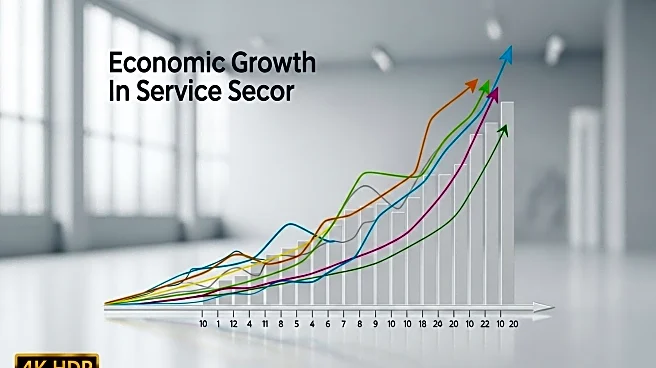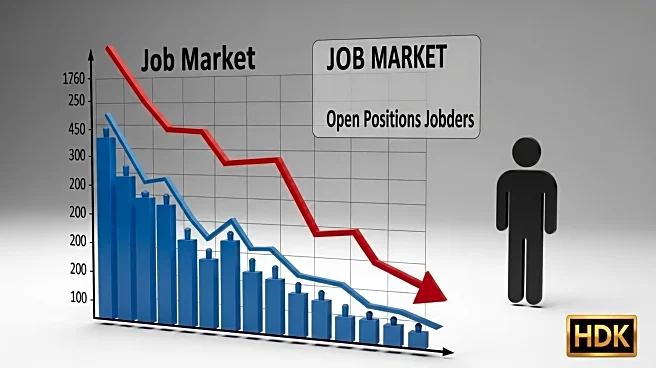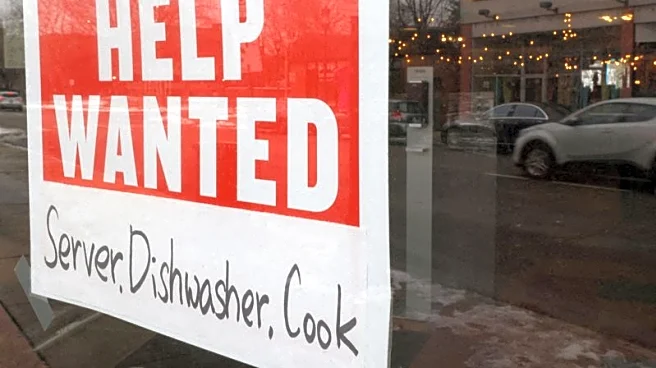What's Happening?
Recent data indicates a slowdown in the U.S. job market, with first-time claims for unemployment benefits reaching an 11-week high and private-sector hiring declining sharply. The August jobs report is expected to show modest job gains, following a disappointing July report that saw significant downward revisions. The labor market is experiencing a low-hire, low-fire environment, with fewer opportunities for workers and job seekers. This trend is attributed to factors such as an aging workforce, reduced immigration, and economic uncertainty stemming from tariff policies.
Why It's Important?
The slowdown in job growth could have significant implications for the U.S. economy, affecting consumer spending and overall economic stability. A shrinking labor force and reduced hiring may signal structural changes in the labor market, potentially leading to increased unemployment and economic challenges. The situation is further complicated by wage growth slowing amid rising inflation, which could dampen consumer spending and economic growth.
What's Next?
The upcoming August jobs report will provide further insights into the labor market's health, potentially influencing Federal Reserve decisions on interest rates. Economists are closely monitoring revisions to previous data and sector-specific employment trends. The report may also highlight demographic disparities, such as rising unemployment rates among Black workers, which could indicate broader economic issues.
Beyond the Headlines
The current labor market dynamics raise questions about long-term economic strategies and the need for policy adjustments to address workforce challenges. The role of automation and AI in shaping employment trends may also become a focal point, as businesses navigate uncertainties and adapt to technological advancements.












